- Understanding Aphids on Cucumbers
- Identification
- Life Cycle
- Damage
- Prevention and Control
- The Common Pests Affecting Cucumber Plants
- 1. Aphids
- 2. Cucumber Beetles
- 3. Spider Mites
- 4. Whiteflies
- 5. Slugs and Snails
- Identifying Aphids and Their Damage on Cucumber Plants
- Natural Ways to Combat Aphids
- 1. Attract Beneficial Insects
- 2. Use Natural Sprays
- 3. Employ Physical Barriers
- Introduce Beneficial Insects to Your Garden
- Ladybugs
- Lacewings
- Hoverflies
- Utilize Homemade Organic Sprays
- Implement Companion Planting Techniques
- 1. Plant Marigolds
- 2. Grow Nasturtiums
- 3. Include Dill and Mint
- Preventing Aphids in the Future
- 1. Maintain Proper Plant Health
- 2. Encourage Beneficial Insects
- 3. Practice Good Garden Hygiene
- Maintaining Healthy Soil and Plants
- 1. Proper Soil Preparation
- 2. Crop Rotation
- 3. Companion Planting
- Regularly Inspecting and Monitoring Your Garden
- “Question-Answer”
- How can I get rid of aphids on my cucumber plants without using chemicals?
- Are there any insects that eat aphids and can be beneficial for my cucumber plants?
- Can I use soap and water to get rid of aphids on my cucumber plants?
- What companion plants can I grow with my cucumbers to naturally repel aphids?
- Where can I buy ladybugs or lacewings to release in my garden?
- Are there any other natural methods to control aphids on cucumber plants?
- “Video” How to Control Pests in your Garden, 3 Organic Sprays I’m USING This Year
Aphids are a common problem for cucumber plants and can quickly infest your garden if left unchecked. These tiny insects feed on the sap of the cucumber plant, causing damage to the leaves and stunting growth. While chemical pesticides may provide a quick solution, they can also harm beneficial insects and contaminate the environment. Fortunately, there are natural methods you can use to combat aphids on cucumbers without the use of chemicals.
1. Introduce beneficial insects: Ladybugs and lacewings are natural predators of aphids. You can attract these beneficial insects to your garden by planting flowers such as marigolds and yarrow, which provide a food source and habitat for them. You can also purchase ladybugs or lacewings from a garden center and release them into your cucumber patch. These friendly bugs will help keep the aphid population in check.
2. Use homemade sprays: A simple method to combat aphids is to create a homemade spray using ingredients you probably already have in your kitchen. Mix a solution of water and dish soap in a spray bottle and apply it to the affected areas of your cucumber plants. The soapy water suffocates the aphids, effectively eliminating them. You can also add a small amount of vegetable oil to the solution for added effectiveness.
3. Prune and maintain your plants: Regularly inspecting your cucumber plants for aphid infestation and promptly pruning any affected leaves or shoots can help prevent the spread of these pests. Additionally, maintaining a healthy garden by watering and fertilizing your plants appropriately can make them less susceptible to aphid damage. Strong, healthy plants are more likely to withstand aphid attacks.
Remember, a healthy garden ecosystem with a diversity of plants and insects is the key to preventing pests like aphids. By implementing these natural methods, you can conquer aphids on your cucumber plants without the need for chemicals, preserving the health of your plants and the environment.
Understanding Aphids on Cucumbers
Aphids are small insects that can cause harm to cucumber plants. They are commonly found on the undersides of leaves and feed on the sap of the plant, which weakens the cucumber and can stunt its growth. Understanding aphids and their life cycle is important in order to effectively combat them.
Identification
Aphids are tiny pear-shaped insects that range in color from green to yellow or black. They have soft bodies and a pair of tubes called cornicles on their back end. These insects reproduce rapidly and colonize plants in large numbers, making them easy to spot. Look for clusters of aphids on the leaves, stems, and buds of cucumber plants.
Life Cycle
Aphids have a complex life cycle that involves both sexual and asexual reproduction. During the warmer months, female aphids give birth to live young, which are capable of reproducing within days. This asexual reproduction allows aphid populations to grow rapidly. As the weather cools down, male aphids are produced, and they mate with the females to produce eggs, which survive through the winter. The eggs hatch in spring, starting the cycle again.
Damage
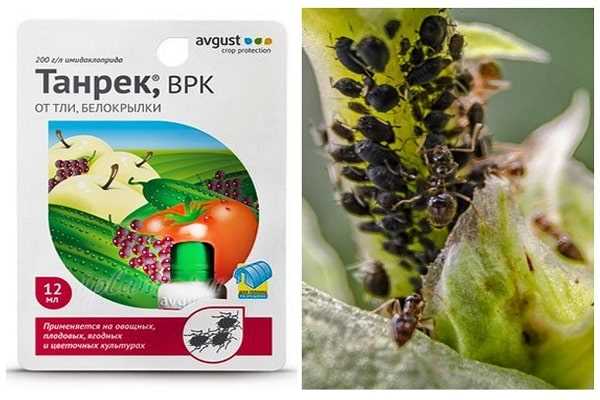
Aphids damage cucumber plants by extracting sap, which can weaken the plant and make it more susceptible to diseases. They also produce a sticky substance called honeydew, which attracts other pests like ants and can lead to the growth of sooty mold. The presence of aphids can cause yellowing, curling, and distortion of the leaves, as well as stunted growth and reduced yields.
Prevention and Control
There are several natural methods to prevent and control aphids on cucumber plants:
- Attract beneficial insects: Encourage the presence of natural predators like ladybugs, lacewings, and parasitic wasps, which feed on aphids. Planting companion plants like marigolds, dill, and fennel can attract these beneficial insects.
- Physical removal: Regularly inspect your cucumber plants and manually remove aphids by spraying them off with water or gently brushing them away. This is an effective method for smaller infestations.
- Homemade insecticidal soap: Create a solution using mild soap and water, and spray it on the affected plants. This can suffocate and kill aphids while being safe for beneficial insects and the environment.
By understanding the behavior and life cycle of aphids, you can take proactive measures to prevent and control their presence on your cucumber plants. With these natural methods, you can effectively combat aphids without the use of harmful chemicals.
The Common Pests Affecting Cucumber Plants
Cucumber plants are susceptible to a variety of pests that can cause damage and hinder their growth. Being aware of these common pests and understanding their behaviors can help you better protect your cucumber plants. Here are some of the most common pests that affect cucumber plants:
1. Aphids
Aphids are tiny insects that are commonly found on cucumber plants. They are usually green or black in color and can quickly reproduce, causing damage to the plant by sucking its sap. Aphids can stunt the growth of cucumber plants and transmit plant diseases. It’s important to keep an eye out for any signs of aphids and take action to control their population.
2. Cucumber Beetles
Cucumber beetles are another common pest that can wreak havoc on cucumber plants. They are small, yellow or green beetles with black stripes and can chew holes in the leaves, flowers, and fruits of cucumber plants. Cucumber beetles can also transmit bacterial wilt, which can lead to the death of the plant. Implementing preventive measures such as row covers and planting resistant cucumber varieties can help minimize the damage caused by cucumber beetles.
3. Spider Mites
Spider mites are tiny arachnids that can infest cucumber plants and cause significant damage. They feed on the plant’s sap, which can result in yellowing, wilting, and eventual death of the plant. Spider mites thrive in hot and dry conditions, so it’s important to regularly water your cucumber plants and maintain a humid environment to discourage their infestation. Introducing predatory insects, such as ladybugs, can also help control spider mite populations.
4. Whiteflies
Whiteflies are small, flying insects that can be found on the undersides of cucumber leaves. They are known for their rapid reproduction and feeding on the sap of cucumber plants. Whiteflies can cause damage by weakening the plant and transmitting diseases. Yellow sticky traps and regular inspection of your plants can help detect and control whitefly populations.
5. Slugs and Snails
Slugs and snails are common garden pests that can also affect cucumber plants. They are nocturnal pests that feed on the leaves of cucumber plants, leaving behind irregular holes and slime trails. To prevent slug and snail damage, you can use deterrents like copper tape or create barriers around your cucumber plants using materials like crushed eggshells or diatomaceous earth.
By identifying and understanding the common pests that affect cucumber plants, you can take the necessary steps to prevent and control their populations. Implementing natural pest control methods and maintaining a healthy growing environment can help ensure the success and productivity of your cucumber plants.
Identifying Aphids and Their Damage on Cucumber Plants
Aphids are small, soft-bodied insects that are commonly found on cucumber plants. They are usually green or yellow in color but can also be black, brown, or even pink. These pests are often referred to as “plant lice” due to their small size and ability to quickly multiply and infest plants.
Identification:
- Aphids are usually less than 1/8 inch long and have a pear-shaped body.
- They have long, thin antennae and two tubelike structures called cornicles on their hind end.
- Their bodies are soft and can be easily squished.
Damage:
Aphids feed on the sap of cucumber plants by piercing the leaves and stems with their mouthparts. This can result in stunted or distorted growth, yellowing or wilting of leaves, and reduced overall plant vigor.
Common signs of aphid damage on cucumber plants include:
- Curled or distorted leaves
- Sticky residue on leaves, known as honeydew
- Black or sooty mold on leaves
- Aphid colonies or eggs on the undersides of leaves
Prevention and Control:
There are several natural ways to combat aphids on cucumber plants:
- Encourage natural predators: Ladybugs, lacewings, and parasitic wasps are natural predators of aphids. Planting flowers such as dill, fennel, or yarrow can attract these beneficial insects to your garden.
- Use a strong stream of water: Spraying the affected plants with a strong stream of water can dislodge aphids and help control the infestation. Repeat this treatment regularly to keep aphid populations in check.
- Apply natural insecticides: Homemade insecticidal soaps or neem oil can be effective in controlling aphid populations. These products smother the insects and disrupt their feeding. Be sure to follow the instructions on the product label.
By identifying aphids and their damage on cucumber plants early, you can take appropriate measures to combat them naturally and help your cucumber plants thrive.
Natural Ways to Combat Aphids
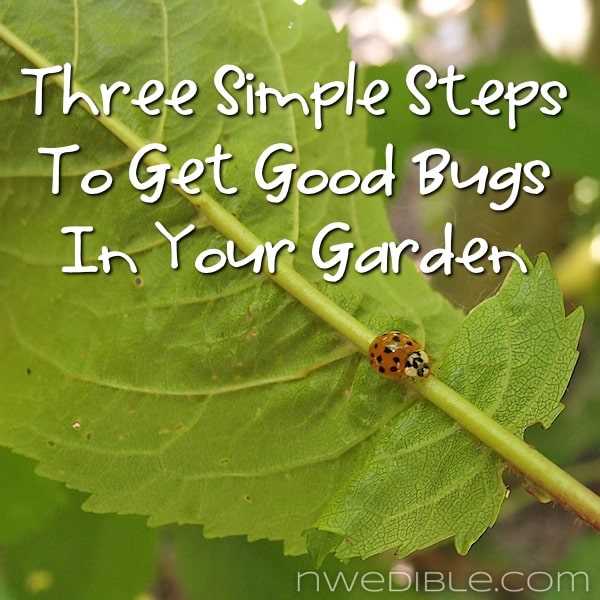
Aphids can be a common problem for cucumber plants, but there are several natural methods you can use to combat them without resorting to chemicals. Here are three simple ways to get rid of aphids on cucumbers:
1. Attract Beneficial Insects
- Encourage the presence of beneficial insects, such as ladybugs, lacewings, and hoverflies, in your garden.
- Plant flowers that attract these insects, such as marigolds, daisies, and yarrow, near your cucumber plants.
- These beneficial insects feed on aphids and will help control their population naturally.
2. Use Natural Sprays
- Mix a solution of water and insecticidal soap or neem oil.
- Spray this solution onto the affected cucumber plants, making sure to cover both the tops and bottoms of the leaves.
- The soap or oil will suffocate the aphids and prevent further infestation.
3. Employ Physical Barriers
- Place row covers or fine mesh netting around your cucumber plants to create a physical barrier that prevents aphids from reaching the plants.
- This can be particularly effective when used early in the season to protect young seedlings.
- Make sure the edges of the covering are securely sealed to prevent aphids from finding their way inside.
By implementing these natural methods, you can effectively combat aphids on your cucumber plants without the use of chemicals. Remember to regularly inspect your plants and take action at the first sign of infestation to prevent the aphids from multiplying and causing damage.
Introduce Beneficial Insects to Your Garden
One effective and natural way to combat aphids on your cucumber plants is to introduce beneficial insects into your garden. These insects are natural predators of aphids and can help to keep their population under control without the use of chemicals. Here are three beneficial insects that can help you conquer aphids:
Ladybugs
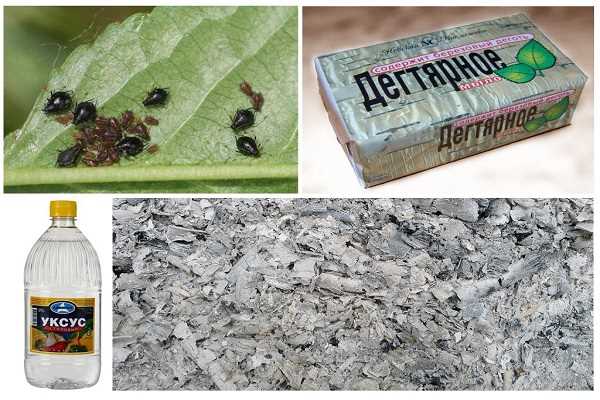
Ladybugs are well-known predators of aphids and are commonly used in gardens as a natural pest control method. They feed on aphids and can consume a large number of them in a short period of time. Attract ladybugs to your garden by planting a variety of flowering plants such as daisies, marigolds, and yarrow. You can also purchase ladybugs from a garden center and release them in your garden.
Lacewings
Lacewings are another beneficial insect that preys on aphids. They have voracious appetites and can feed on hundreds of aphids in a single day. To attract lacewings to your garden, plant pollen and nectar-producing flowers such as dill, fennel, and sweet alyssum. Lacewings can also be purchased and released in your garden to help control aphids.
Hoverflies
Hoverflies, also known as flower flies, are beneficial insects that are effective aphid predators. The larvae of hoverflies feed on aphids, while the adults feed on nectar and pollen. You can attract hoverflies to your garden by planting flowers such as sunflowers, daisies, and cosmos. Additionally, avoid using insecticides in your garden, as they can harm hoverflies and other beneficial insects.
When introducing beneficial insects to your garden, it’s important to create an environment that is attractive to them. Planting a diverse range of flowering plants will provide them with a source of nectar and pollen, helping to encourage their presence. By incorporating these beneficial insects into your garden, you can naturally combat aphids on your cucumber plants and maintain a healthy balance in your garden ecosystem.
Utilize Homemade Organic Sprays

Homemade organic sprays can be a great way to combat aphids on cucumbers without using harmful chemicals. These sprays are easy to make, safe for the environment, and effective in controlling aphid populations. Here are three simple recipes that you can try:
Soap Spray:
Mix 1 tablespoon of liquid soap (such as Castile soap or dish soap) with 1 quart of water. Spray the mixture directly onto the aphids, making sure to cover both the tops and bottoms of the leaves. The soap will suffocate the aphids and help to control their population.
Garlic Spray:
Crush several garlic cloves and soak them in 1 quart of water overnight. Strain the mixture and pour it into a spray bottle. Spray the garlic solution onto the affected cucumber plants, focusing on the areas with aphids. The strong scent of garlic will deter aphids and prevent them from infesting your plants.
Neem Oil Spray:
Mix 1 tablespoon of neem oil with 1 quart of water and add a few drops of liquid soap. Shake well to emulsify the mixture. Spray the neem oil solution onto the cucumber plants, paying special attention to the areas where aphids are present. Neem oil acts as a natural insecticide and disrupts the feeding and reproduction of aphids.
Repeat these spray treatments every 7 to 10 days or after rainfall to maintain control over aphid populations. Additionally, always test any homemade spray on a small part of the cucumber plant before applying it to the entire plant to ensure it doesn’t cause any damage. These organic sprays provide an effective, safe, and environmentally-friendly solution to combat aphids on your cucumber plants.
Implement Companion Planting Techniques
One effective way to combat aphids on cucumbers naturally is by implementing companion planting techniques. Companion planting involves growing different plants together that have mutually beneficial relationships. By strategically choosing companion plants, you can create a natural barrier against aphids and other pests.
1. Plant Marigolds
Marigolds are known for their ability to repel aphids and other pests. Their strong scent deters aphids from approaching your cucumber plants. Plant marigolds around the perimeter of your cucumber garden or in between cucumber rows to create a natural barrier. This will help prevent aphids from reaching your cucumber plants.
2. Grow Nasturtiums
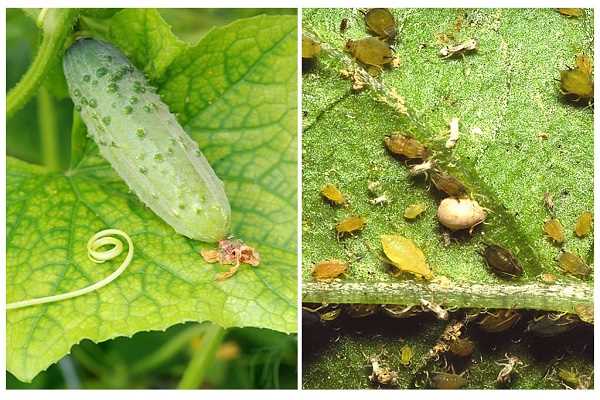
Nasturtiums are another great companion plant for cucumbers. They act as a natural trap crop, attracting aphids away from your cucumbers. The aphids are drawn to the brightly colored flowers of the nasturtiums, leaving your cucumber plants unharmed. You can plant nasturtiums at the edges of your cucumber garden or intersperse them among your cucumber plants.
3. Include Dill and Mint
Dill and mint are two herbs that can help repel aphids and other pests. Their strong aromas confuse and deter aphids, keeping them away from your cucumbers. Plant dill and mint near your cucumber plants to create a natural barrier. You can also harvest these herbs and use them in cooking, making them a functional addition to your garden.
Remember to regularly monitor your cucumber plants for any signs of aphids or other pests. If you notice an infestation, you can try using natural deterrents such as insecticidal soap or neem oil spray to control the population. By implementing companion planting techniques and using natural pest control methods, you can effectively combat aphids on cucumbers without the use of chemicals.
Preventing Aphids in the Future
Aphids can be a persistent problem in cucumber plants, but there are several steps you can take to prevent them from infesting your garden in the future.
1. Maintain Proper Plant Health
Keeping your cucumber plants healthy and strong is one of the best ways to prevent aphid infestations. Here are some tips to ensure your plants are in optimal condition:
- Plant cucumber varieties that are resistant to aphids.
- Provide adequate sunlight, water, and nutrients to the plants.
- Regularly inspect and remove any damaged or diseased leaves.
- Use organic fertilizers to promote healthy growth.
- Rotate crops each year to prevent a buildup of pests in the soil.
2. Encourage Beneficial Insects
Natural predators of aphids, such as ladybugs, lacewings, and parasitic wasps, can help keep their population in check. You can attract these beneficial insects to your garden by:
- Planting flowering plants that attract beneficial insects, such as marigolds and daisies.
- Installing bird feeders to attract birds that feed on aphids.
- Creating habitats like rock piles or log piles for insects to nest and overwinter.
3. Practice Good Garden Hygiene
Proper sanitation and garden maintenance can go a long way in preventing aphids from infesting your cucumber plants. Here are some practices to follow:
- Remove any weeds or grasses near your cucumber plants, as they can harbor aphids.
- Clean gardening tools and equipment regularly to avoid spreading aphids.
- Remove and destroy any infested plants or plant parts to prevent the spread of aphids.
- Keep the garden area tidy and free of debris to minimize hiding places for pests.
By following these preventive measures, you can significantly reduce the chances of aphid infestations in your cucumber plants. Remember to be consistent and vigilant in your gardening practices to maintain a healthy and aphid-free garden.
Maintaining Healthy Soil and Plants
Healthy soil and plants are essential in combating aphids on cucumbers naturally. By following these simple steps, you can ensure the health of your plants and minimize the risk of aphid infestations.
1. Proper Soil Preparation
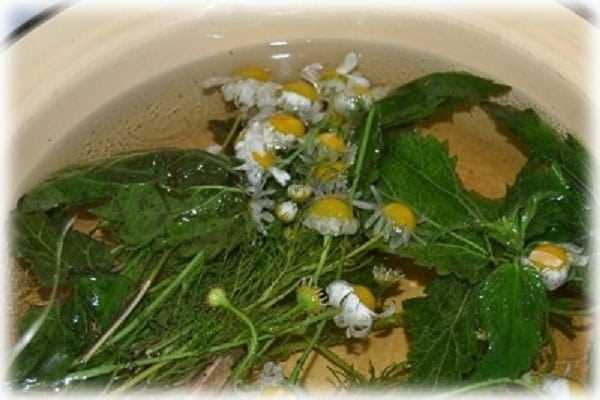
Start by preparing the soil before planting your cucumbers. This includes removing any weeds, rocks, or debris that could hinder plant growth. Loosen the soil using a garden fork or tiller to promote better root development and drainage.
It’s also important to ensure that the soil has the right balance of nutrients. Conduct a soil test to determine its pH level and nutrient content. Most cucumbers prefer a slightly acidic soil with a pH range of 6.0 to 6.8. If the pH is too high or low, you can adjust it by adding lime or sulphur accordingly.
Additionally, enrich the soil with organic matter such as compost or well-rotted manure. This will not only improve the soil structure but also provide essential nutrients for healthy plant growth.
2. Crop Rotation
Rotating crops is an effective method to prevent the buildup of pests and diseases in the soil. Avoid planting cucumbers in the same spot year after year, as this can create an ideal environment for aphids and other pests to thrive.
Rotate your cucumber plants with unrelated crops, preferably from different plant families. This practice disrupts the life cycles of pests, reduces soil-borne diseases, and helps maintain nutrient levels in the soil.
3. Companion Planting
Companion planting involves planting specific plants together to improve each other’s growth and repel pests. By choosing the right companions for your cucumbers, you can discourage aphid infestations and promote overall plant health.
Some beneficial companions for cucumber plants include:
- Marigolds: their strong scent repels aphids
- Nasturtiums: their flowers attract beneficial insects that prey on aphids
- Dill, oregano, and sage: their strong aromas repel aphids
Plant these companions near your cucumber plants to create a natural barrier against aphids.
Remember, maintaining healthy soil and plants is a long-term approach to pest management. Regularly monitor your plants for signs of aphid activity, and promptly address any issues. By implementing these natural methods, you can keep aphids at bay and enjoy healthy cucumber harvests.
Regularly Inspecting and Monitoring Your Garden
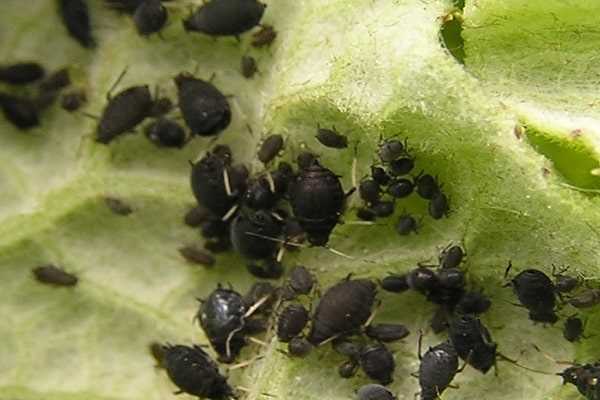
Regular inspection and monitoring of your garden is crucial for keeping aphids under control. By observing your plants regularly, you can detect any signs of aphid infestation early on and take appropriate action to prevent them from spreading.
Here are some simple steps to follow:
- Inspect your plants: Take a close look at the leaves, stems, and buds of your cucumber plants. Look for signs of aphids such as clusters of small, pear-shaped insects, distorted leaves, or sticky residue known as honeydew.
- Monitor the population: Keep track of the number of aphids in your garden. You can do this by regularly counting the number of aphids present on a few sample plants. This will help you determine if the population is increasing or decreasing over time.
- Consider using yellow sticky traps: Place yellow sticky traps near your cucumber plants to monitor and catch adult aphids. These traps attract aphids with their bright color, making it easier to identify and remove them.
- Inspect nearby plants: Aphids can easily move from one plant to another, so it’s important to also inspect nearby plants in your garden. If you find aphid-infested plants, take immediate action to prevent the aphids from spreading to your cucumber plants.
Benefits of regular inspection and monitoring:
- Early detection of aphid infestations
- Prompt action to prevent the spread of aphids
- Monitoring the effectiveness of your control measures
- Preventing severe damage to your cucumber plants
By regularly inspecting and monitoring your garden, you can catch aphid infestations in their early stages and take appropriate steps to control them. This will help you maintain healthy cucumber plants without the need for chemical pesticides.
“Question-Answer”
How can I get rid of aphids on my cucumber plants without using chemicals?
There are several natural methods you can try to combat aphids on cucumber plants. One method is to introduce beneficial insects like ladybugs or lacewings to your garden, as they feed on aphids. Another method is to spray a mixture of soap and water onto the affected plants, as this can suffocate the aphids. Additionally, you can try planting companion plants like marigolds or nasturtiums, as their strong scent repels aphids.
Are there any insects that eat aphids and can be beneficial for my cucumber plants?
Yes, there are several beneficial insects that feed on aphids and can help control their population on cucumber plants. Ladybugs and lacewings are two common examples of beneficial insects that eat aphids. These insects can be purchased or attracted to your garden by providing them with suitable habitat and food sources.
Can I use soap and water to get rid of aphids on my cucumber plants?
Yes, using a mixture of soap and water is a common and effective method to combat aphids on cucumber plants. Simply mix a few drops of mild liquid soap in a spray bottle filled with water, and then spray the mixture onto the affected plants. The soap suffocates the aphids and helps control their population. It’s important to use mild, non-toxic soap to avoid harming the plants.
What companion plants can I grow with my cucumbers to naturally repel aphids?
There are several companion plants that can help repel aphids from your cucumber plants. Marigolds and nasturtiums are two examples of companion plants that have a strong scent that repels aphids. Planting these flowers near your cucumber plants can deter aphids from infesting them. Additionally, herbs like dill and cilantro can also act as natural repellents for aphids.
Where can I buy ladybugs or lacewings to release in my garden?
You can buy ladybugs or lacewings from local garden centers, nurseries, or online stores that specialize in beneficial insects. It’s important to purchase them from reputable sources that provide healthy and viable insects. Before releasing the insects into your garden, make sure to follow the instructions provided by the seller to ensure their proper introduction and effectiveness.
Are there any other natural methods to control aphids on cucumber plants?
Yes, there are several other natural methods you can try to control aphids on cucumber plants. One method is to use a strong water spray to dislodge the aphids from the plants. Another method is to apply a homemade garlic or chili pepper spray, as the strong smells repel aphids. Additionally, maintaining a healthy and balanced garden ecosystem with diverse plant species can help naturally control aphid populations.







